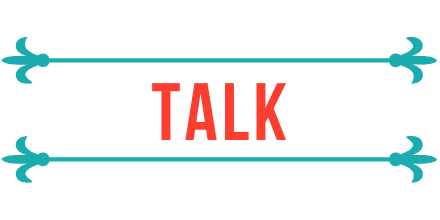7 useful tips for traveling with ease ✈️
Traveling can be daunting, especially if you have never felt comfortable doing it before. Here you can find my personal take on things that helped me get through over 15 airports in seven countries in a timely manner in the past year.
All these tips I learned on the go and figuring out what worked for me helped me get to my destination faster without feeling “that should be a better way of doing this”.
1. Check-in online if you can
This will help you save time at the airport because you won’t need to stay in line to check-in. Most airlines also have a fast drop-off for checked bags, which means you’ll spend less time standing at the airport before you go through security.
2. Pack like you mean it
Packing is an acquired skill. The more you do, the better you get at it. I like to have time for packing one day in advance since this gives me time to adjust if I remember anything I might have forgotten. I even have a checklist on Notion you can duplicate so you won’t forget to pack anything important.
No matter how long or short the trip, I usually travel with a carry-on suitcase and a backpack. This requires me to be very intentional about what I take with me. Here’s how I divide my things between the suitcase and the backpack:
- In the backpack, I take:
- All my electronics: gimbal, iPad, work computer, noise-canceling headphones, camera, power bank, and chargers
- All liquids: Medicine, lotions, hair products
- A sweater or hoodie, an extra pair of underwear, and a t-shirt
- Passport, currency, jewelry, and cards
- An empty water bottle
- In the carry-on goes:
- All my clothing: cardigans, underwear, a hairdryer bonnet for the curls;
- Anything that doesn’t have a battery: tripods, swag, selfie stick, and flip-flops.
Before the airport
I started using packing cubes because they help me keep my clothes organized, especially when I have little time in between trips to wash everything. So whenever I’m packing to come home, I fit all my dirty clothes into one packing cube, so it is easy to find what I need to wash before the next trip.
Always do a weight test. A good rule of thumb is to try to lift the carry-on over your head to make sure you can lift it yourself. Flight attendants can always help you, but it is a good measure to ensure you can carry your own weight.
At the airport
Going through security at the airport, you’ll be asked to take out all liquids and large electronics from your bags. Keeping everything in one place will help you get cleared faster. Since you can’t take anything with over 100ml in the cabin, remember to empty your water bottle before getting in line. You can always find a water fountain to fill out again after you get cleared.
You may be requested to check your suitcase at the gate. It is a good idea to plan your packing around that possibility. Keeping all batteries with you is a good measure, so you don’t have to go around opening your suitcase on the airport floor to take stuff out.
3. Research how to get around at your destination
Research how to get around in the city you will be in. I always look for information on how easy it is to get around the city. This step helps me in two ways:
- Reduces the anxiety of not knowing where I am, especially if I don’t speak the language.
- Helps me prepare for any surprises that might arise, for example, strikes in public transportation.
For example, the first time I went to Ireland, I discovered that Uber and taxis are “difficult” over there. All Uber drivers are actually taxi drivers. You also need to leave earlier or schedule taxis in advance. They also use an app called Free Now, which requires you to confirm your profile by receiving an SMS.
Buses in Berlin can be a nightmare, but trains and trams work really well. Google will help you get around and pick the correct lines even if you don’t speak German. Another tip is to download the BVG app so you can buy tickets on the go, but pay attention to the ticket type and pick the correct starting point. There might be people checking your ticket in the tram/train car.
4. If you need to be connected at all times: eSIM is the way to go
If you need to be connected while away, buy and configure an eSIM before you go. I use an eSIM from Airalo. Airalo has a plethora of packages and works in a lot of countries. Because it is right there on your phone is easier than buying a new SIM every time, lowering the decision burden. Since they are digital, using an eSIM also generates less trash.
Another good thing, the data or mobile plan you pick may expire, but the eSIM itself doesn’t, so you only have to set up the eSIM once. I bought one global data eSIM that I can add more data to it whenever I need to travel again.
Just remember to set it up and know how to configure it before traveling since you’ll need a stable internet connection.
5. Be ready to take your shoes off
Be prepared to take your shoes off. This is one most of us forget. Depending on several factors, you may be asked to take your shoes off and put them through the X-ray machine. Avoid shoes that might get stuck or require a lot of effort to take out or put back on your feet.
6. No noise is better
Have a good pair of noise-canceling headphones. My favorite one so far is the Sony WH-1000XM3. I keep thinking about upgrading mine to a newer version of it. Still, this one serves me soooo well that I can not justify buying the new ones for myself just yet.
I bought the Sony WH-1000XM3 around 4 years ago. Out of its features, I like that the battery lasts a long time even after so long using it and that you can configure the noise-canceling level. There’s nothing fancier than not hearing the airplane noises during an 8h red eye.
7. Jet-Lag is real
Make sure to respect yourself. If you haven’t crossed timezones before, you might be hard on yourself and feel like “you should be enjoying this more,” but be mindful that our bodies need time to adjust to new routines and time zones.
For me takes about 5 days to completely adjust to a new timezone. That’s just how my body works. Even with me going to bed and getting out of bed at the correct time every day, I still feel tired or that I should be sleeping at odd hours. Exercising and having a plan for working or touristing helps fight it off, but if I can, I’ll take naps after lunch and extra long walks to tire myself before bed.
Recap
In short, here’s what you need to keep in mind:
- 🎟️ Check-in online if you can;
- 🧳 Pack like you mean it;
- 📱 Find a phone plan that works for you; eSIM is a great thing;
- 👟 Be prepared to take your shoes off;
- 🎧 Noise-canceling headphones are REALLY helpful;
- 🗺️ Check how to get around the city before you actually get there;
- 😴 Jet-Lag is real. Respect your body.
Before you go, I’d like to leave you with one bonus tip: take more pictures than you think you need. I always arrive home feeling like I could use more pictures or videos, even if I don’t post them.




